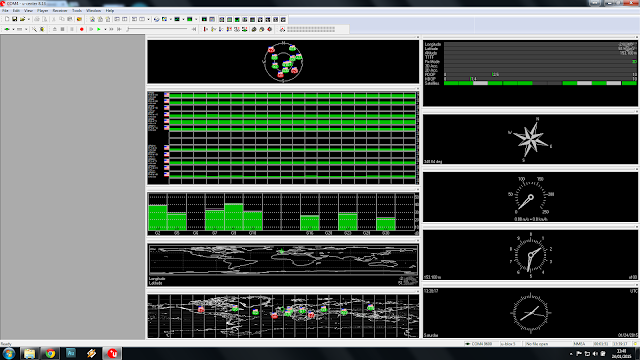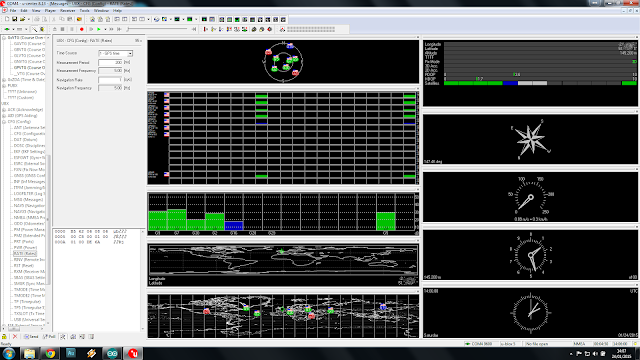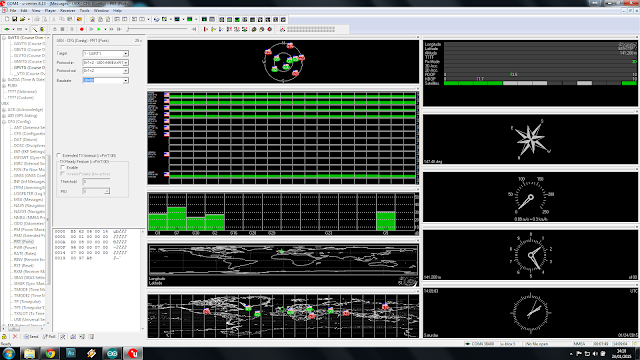WARNING. Do NOT try this at home. This project calls for some high voltages. It will floor you or kill you if you come into contact with it. It will not warn you, blow a fuse, nor pull your safety trip. It may not give you a second chance. RESPECT IT'S AUTHORITY.
Reforming capacitors carries the risk of explosion.
I will not, under any circumstances, accept any liability if you decide to re-create this project for yourself.
Now we've got that out of the way....
 It's not a pretty looking thing. It's had many iterations, hence the state of the box. It used to have a 1uA meter movement (with adjustable shunts), but that suffered so many accidents, the needle ended up shaped like a banana, and eventually the meter went open circuit, due to a major overload. At this point I grafted in a digital meter, salvaged from scrap equipment. It directly reads 0- 999.9 uA, and is powered from a separate power supply (a redundant mobile phone charger)
It's not a pretty looking thing. It's had many iterations, hence the state of the box. It used to have a 1uA meter movement (with adjustable shunts), but that suffered so many accidents, the needle ended up shaped like a banana, and eventually the meter went open circuit, due to a major overload. At this point I grafted in a digital meter, salvaged from scrap equipment. It directly reads 0- 999.9 uA, and is powered from a separate power supply (a redundant mobile phone charger)The front panel also has the terminals for the capacitor under test, and a discharge switch.
On the side is mounted a selector switch, which switches in varying values of current limiting resistor. Nice labelling , eh?
The main power is supplied from a variable transformer (variac) which is built into by bench supply. It's variable from 0-350 VAC.
The sensible option would be to power the unit from a dedicated, isolated multi-tap transformer, but I don't have one...
It's wired up like this: -
So, what is this "reformation" anyway?
Well, when we're servicing or restoring a piece of ageing electronics, the electrolytic capacitors may have begun to lose their polarity. It's a chemical thing. My daughter would know. Anyway, the practical upshot is the capacitor will draw current if woken abruptly from it's slumber. (This even applied to "NOS" capacitors, even if they've never been used)
Say we have a 200uF 450V smoothing capacitor, and it's drawing 10mA at 400V, It's really pretending to be a 40K resistor, and it's going to start to dissipate power (Power = Voltage x current = 400 x 0.010 = 4 watts), and not only that but it's probably not being much of a capacitor either.
This power is going to be dissipated as heat. Now 4 watts doesn't sound like a lot, but this is inside a sealed can (usually aluminium) full of electrolytic gunge and tin foil. Pressure starts to build up inside, the resistance gets lower, more current is drawn, more heat is generated, and the whole situation just gets worse until the can explodes, and showers the workshop in bits of tin foil, and acrid smoke. If you ever experience this, just open a window with your now trembling hands, and leave for 5 minutes to allow the smoke to clear!
What the reforming process does, is let the plates regain their "form" or polarity. We need to gently apply power, and raise the voltage to the capacitors full rated voltage over a period of time. I usually do this for a period of a few hours, sometimes overnight.
So, having made our reformer, how do we use it?
Firstly we need to set our maximum voltage. Move the selector switch round to 0 ohms, and measure the voltage at the output terminals. Don't connect your capacitor as yet. Adjust the variac to give the required voltage (I usually use the rated voltage less 10% to allow for any variations in mains voltages).
Now switch off the supply and hit the discharge switch for 1 min. This will discharge C1. You can now connect the capacitor to be reformed to the terminals. Select the 12 megohm position, switch the discharge switch off, and switch the supply back on. The meter should show a few uA as the capacitor charges. Now decrease the resistor until the cap is drawing approximately 100uA and leave it there. Pop back in an hour or so, and the meter should have dropped again. Reduce the resistance again, and the meter will once again rise.
Repeat the above process until no improvement is made. Take your time. If the can is isolated, feel it to see if it's getting warm. It shouldn't. If it is, increase the resistance and just wait. Once the electrolytic has reformed, remove the supply, and hit the discharge switch. Wait for the capacitor to discharge.
What sort of leakage can we expect from an old electrolytic?
Good question. It depends on the value of capacitance; bigger values leak more. And voltage rating; Higher voltages *tend* to leak more. This is where experience is key. If your 22uF, 400V capacitor is drawing 1mA, forget it. If it's drawing 400uA it may be OK. If it's drawing 200uA or less, put it back in the kit and switch on!
Modern capacitors have very low leakage values. Not so with the ancient stuff I deal with, but even 60 year old electrolytics that haven't seen power in decades can be reformed successfully. It's not always the case though. Some are beyond redemption, and replacement is the only option.
I sometimes choose to monitor the voltage across the capacitor during reforming, but we need to be aware that our meter will have some resistance of it's own, and will effect the reading on the current meter (it will increase slightly) and will drop the voltage across our capacitor slightly (as it discharges through the resistance of our meter). A good quality digital meter will have an internal resistance of 10 megohms. A moving coil meter , like an AVO 8, will have a varying resistance of 20 Kilohms per volt. Keep this in mind.
I'm lucky enough to have a capacitance meter (for measuring the actual value in uF) and an E.S.R. (equivalent series resistance) meter, and I'm always amazed how some of these old devices shape up after a successful reforming.
Now, here's the warning bit again....
A variac is NOT isolated from the live or line of your mains. Use an isolation transformer for your safety. Reforming a high voltage (more than 50v) electrolytic capacitor poses a very real shock hazard. It may shock or kill you.
Be safe. There's only one of you, and I need all the readers I can get!
Oh yes... the name....
It was a joke. It started out as the dreadnaught , got blown up, became the dreadnaught MKII, then after so many failures and improvements, I lost count...
























































